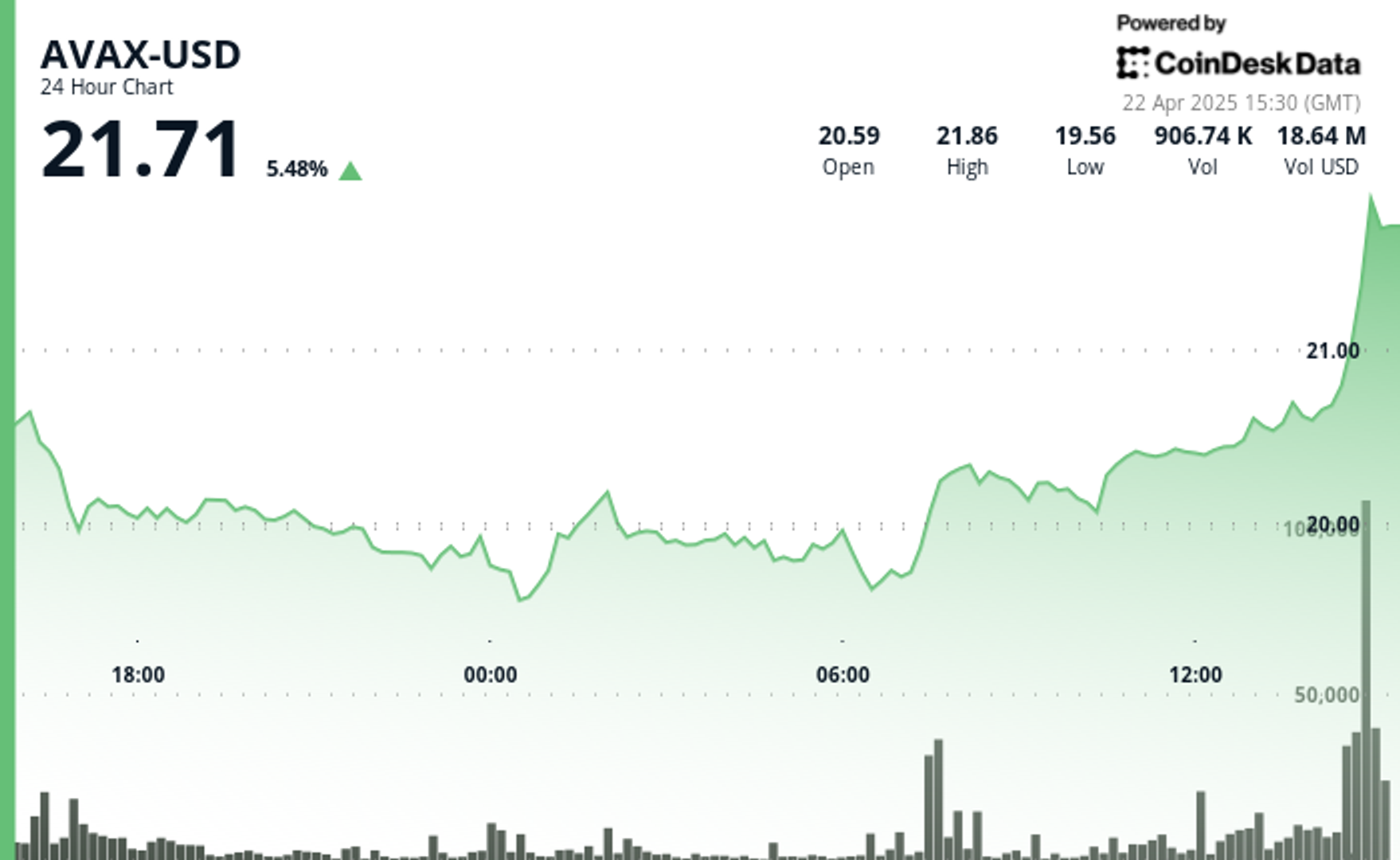Uncategorized
Why 2025 Will See the Comeback of the ICO

Regulatory overhaul in America and a thawing of crypto antagonism globally in 2025 will usher in a new generation of decentralized capital formation, which was first popularized in 2017 as “ICOs” (initial coin offerings).
During the 2010s, crypto hadn’t settled on a productive use case for Bitcoin and altcoins until Ethereum smart contracts enabled early-stage teams to raise capital from supporters dispersed around the world. We saw Ethereum bootstrap a global decentralized computer which spawned DeFi, NFTs and various crypto primitives funded by less than $20 million raised from a global community.
Many other projects soon followed suit and we observed a new dynamic in which raising early-stage capital from a decentralized community almost always resulted in more value-add for the project and entrepreneurs than even the best, most well-intentioned venture capitalists could offer. With a decentralized investor group, entrepreneurs get free evangelists, beta testers and code contributors — i.e. free work that contributed to the project at hand. Also, the shorter liquidity time frame allowed for better risk-return profiles for early-stage investors.
Unfortunately, ICOs were slowly choked off and signalled as “not in compliance” with regulations that were never exactly spelled out. By 2020, they had slowed to a trickle and 88% of ICO tokens were trading at below issuance price.
Fast forward to 2025 and we can see the convergence of some important inputs that allow for the re-emergence of compelling investment opportunities, but with very different characteristics from ICO 1.0.
The ingredients of ICO 2.0
1. Updated regulatory stance
I predict that value accrual will be a fundamental part of the “why” of investing in tokens this time around. Entrepreneurs and investors in the space have matured and are ready to collectively admit that there is an expectation of profit with most tokens. In fact, one could argue that the obfuscation of how token holders would be compensated as a hand-wavey attempt to sidestep the Howey test was the primary problem the first time around.
KYC/AML will be focused on on-ramps and off-ramps such as exchanges and L2 bridges, and reasonably concentrate at the point of realization of gains back into fiat, which is the appropriate light touch that should satisfy reasonable regulators.
2. Market turnover
We are seeing the rapid decline of certain mid-market companies that could remake their business models by becoming community-led and decentralized. For example, mid-size media companies including newspapers and magazines are an obvious business model that could be greatly improved by the use of a token economy to drive citizen journalists towards greater professionalism.
3. Crypto’s progression
In 2017 we had ICO-click-races on very rough UI/UX interfaces, pre-launch SAFT (Simple Agreement for Future Tokens) rounds going to a handful of VCs and years of waiting until a live network launch. No one should be surprised then that the majority of ICO projects died. The Darwinian nature of any emerging technology is such that most will perish but the few that survive go on to create great value (spoiler alert: >90% of AI projects are going away as well).
Crypto now has decent on-boarding and good user-facing apps, and most importantly, the community has shown an uncanny ability to publicly call out nonsense and root out bad actors far better than government oversight ever has. The light of open decentralized ledgers is a particularly strong disinfectant.
Implications and predictions
So what does all this mean for the crypto community?
This new wave of decentralized capital formation will dwarf the approximately $20 billion of capital allocated in ICO 1.0 in 2017 and 2018. Over the coming years, we will see hundreds of billions in total capital formation across DeFi, NFTs, RWAs and a plethora of other crypto primitives.
M&A activity will represent a significant component of on-chain capital formation activity. Whether it is traditional businesses getting serious about crypto and buying up lost ground, like the Stripe-Bridge deal or EVM L2s joining forces as they recognize that only a handful will survive to be significant, we will see billions of dollars worth of M&A activity in the coming year.
In addition, mid-market Web2 and legacy companies will seek to reinvent their business model now that they can use token-incentivization under less hostile circumstances. We are seeing companies in energy, media, art and cellular communications get serious about token-incentivization to turn their value chain into an open marketplace, as well as rapidly acquire customers and use cheap(er) labour.
I am also optimistic that regenerative financing, blending a capitalistic mandate and philanthropic mandate, will find its place. And I am very excited about how crypto can change paradigms in bridging reasonable returns on capital with social goals in more compelling ways than we’ve seen to date.
I predict that we will see a range of novel ways to choose ICO participants, whether as a reward to LPs, relying on reputation based on on-chain activity or via the usage of certain proofs. The byproduct of this is that we will see better balance between retail and institutional/VC investors.
Finally, as always with crypto, we will continue to see relentless innovation and new ideas that give rise to more early stage funding opportunities. Many exciting new teams clearly see that AI’s natural transaction medium will be via crypto and are preparing accordingly. AI agents will bootstrap themselves with token-backed fundraising mechanisms that blend debt and equity principles.
Overall, I am optimistic that the crypto community has internalized the lessons learned along the stoic path of evolution to this point. As a litany of opportunities for capital allocation emerge next year, I encourage everyone in crypto to be vocal and open in highlighting due diligence red flags and bend the arc of this industry towards open access, fair launches and projects that are forthright in accruing value to token holders.
Fair launches are a superior path forward and we should all work towards more equitable and transparent fundraising practices. There are still many issues to resolve and there will be some spectacular failures as we move forward, but decentralized capital formation is crypto’s original killer app, and it deserves to continue to evolve.
Uncategorized
AVAX Surges 10.7% as Bullish Breakout Signals Strong Momentum

Avalanche’s AVAX token has broken out of its multi-week correction phase, demonstrating remarkable strength despite ongoing geopolitical tensions affecting cryptocurrency markets.
The broader market gauge, CoinDesk 20 Index (DLCS), has demonstrated exceptional bullish momentum, surging from 1403.33 to 1461.17 in the last 48 hours, representing a 4.12% gain, while the overall range spans 95.56 points (6.97%) from the low of 1365.61 to the high of 1461.17.
The recent price action of AVAX shows accelerated momentum with the formation of a bull flag pattern and decisive breakout above $20.40, coinciding with significant institutional developments in the ecosystem, according to CoinDesk Research’s technical analysis data.
Technical Analysis Highlights
- AVAX demonstrated remarkable strength, surging from 18.87 to 20.89, representing a 10.7% gain.
- Price action reveals a clear bullish trend with higher lows forming a strong support trendline around 19.50.
- After consolidating between 19.30-19.70 on April 20, AVAX experienced a significant breakout on April 21, with volume increasing substantially as the price pushed above 20.00.
- The most recent 48 hours show accelerated momentum with the formation of a bull flag pattern and a decisive breakout above 20.40, suggesting further upside potential.
- Key resistance at 20.90 now becomes the level to watch, with Fibonacci extension targets pointing to 21.50 as the next significant objective.
- In the last 100 minutes, AVAX surged from 20.61 to 21.04, representing a 2.1% gain.
- After consolidating between 20.50-20.60 during the 13:20-13:40 timeframe, price formed a solid base before initiating a powerful upward move.
- The decisive breakout occurred at 14:40 with extraordinary volume (146,387 units), creating a strong support level at 20.80.
- Multiple high-volume candles followed between 14:44-14:48, pushing the price through the critical 21.00 psychological barrier with the highest volume spike (142,112 units) at 14:47.
- This breakout completes the bullish pattern established in the previous 48 hours, with Fibonacci extension targets now suggesting 21.50 as the next significant objective.
Disclaimer: This article was generated with AI tools and reviewed by our editorial team to ensure accuracy and adherence to our standards. For more information, see CoinDesk’s full AI Policy. This article may include information from external sources, which are listed below when applicable.
External References:
- «Avalanche (AVAX), Toncoin (TON) and Kaspa (KAS): Can They Recover?« — CryptoDaily, published April 2025.
- «Avalanche (AVAX), Polkadot (DOT) Rebound on the Horizon? Harmonic Pattern Signals Bullish Move» — Bitzo, published April 2025. — Bitzo, published April 2025. — Bitzo, published April 2025.
- «Avalanche Price Prediction« — Cryptopolitan, published April 2025.
- «Avalanche Card Unveiled: Will It Spark Bullish Momentum for AVAX?« — Coinpedia, published April 2025.
Uncategorized
Janover Buys Another $11.5M in SOL, Gets Renamed Amid Crypto Treasury Strategy Play

Janover (JNVR), the real estate-focused fintech company with a Solana (SOL) treasury strategy, has been renamed to DeFi Development Corp and purchased another $11.5 million worth of SOL tokens, the firm said on Tuesday.
The move brings the company’s total SOL holdings to 251,842, including staking rewards, the company said. That’s valued at around $36.5 million, with SOL currently trading around $145.
JNVR shares were down 2.5% today at $38.3, well below last week’s peak just shy of $80. However, the stock is still up over 800% since adopting the crypto treasury strategy. SOL advanced nearly 5% over the past 24 hours, with the broader crypto market climbing higher.
The purchase was part of the Boca Raton, Florida-based company’s new crypto bet to position itself as the first U.S.-listed company with a treasury strategy centered on Solana and its native token SOL.
As part of the strategy, the firm seeks to accumulate SOL and operate one or more validators to secure the blockchain. The pivot happened after a team of former executives of crypto exchange Kraken bought a majority stake in the firm earlier this month.
Read more: Janover Takes Page From Saylor Playbook, Doubling SOL Stack to $20M as Stock Soars 1700%
The purchase was made using funds from a $42 million financing round the company completed earlier this year. Based on the latest figures, each share of the company represents 0.17 SOL, up 62% from its last crypto purchase, according to the press release.
The firm will also change its ticker to DFSV on the Nasdaq exchange at a future date to reflect its new name.
Last week, the company announced a strategic partnership with Kraken with plans to delegate part of the exchange’s SOL holdings to stake to validators operated by DeFi Development Corp. The firm also teamed up with BitGo to acquire locked tokens via over-the-counter markets.
Uncategorized
Arch Labs Raises $13M in Funding for Bitcoin-Based Smart Contracts

Bitcoin decentralized finance (DeFi) developer Arch Labs raised $13 million in funding toward building «ArchVM,» which the developers say will provide smart-contract functionality on the original blockchain.
The funding round, which valued the company at $200 million, was led by Pantera Capital, according to an announcement on Tuesday.
Arch’s plans to enable decentralized applications and protocols natively on Bitcoin.
ArchVM will handle off-chain computations to enable «Turing-complete smart contracts at the Bitcoin base layer» and provide Solana-like transaction speeds, Arch Labs said in the announcement.
The goal of introducing smart contracts to Bitcoin began to gather steam in October with the release of the BitVM computing language.
Numerous projects are now using BitVM as the basis for bringing smart contracts to Bitvcoin via layer-2 networks or bridges. Arch’s aim is to avoid the need to bridge assets to layer-2s, which could present additional risks.
-

 Fashion6 месяцев ago
Fashion6 месяцев agoThese \’90s fashion trends are making a comeback in 2017
-

 Entertainment6 месяцев ago
Entertainment6 месяцев agoThe final 6 \’Game of Thrones\’ episodes might feel like a full season
-

 Fashion6 месяцев ago
Fashion6 месяцев agoAccording to Dior Couture, this taboo fashion accessory is back
-

 Entertainment6 месяцев ago
Entertainment6 месяцев agoThe old and New Edition cast comes together to perform
-

 Sports6 месяцев ago
Sports6 месяцев agoPhillies\’ Aaron Altherr makes mind-boggling barehanded play
-

 Business6 месяцев ago
Business6 месяцев agoUber and Lyft are finally available in all of New York State
-

 Entertainment6 месяцев ago
Entertainment6 месяцев agoDisney\’s live-action Aladdin finally finds its stars
-

 Sports6 месяцев ago
Sports6 месяцев agoSteph Curry finally got the contract he deserves from the Warriors





